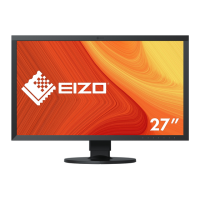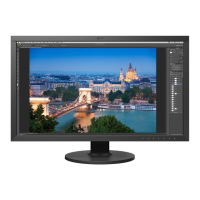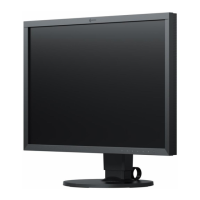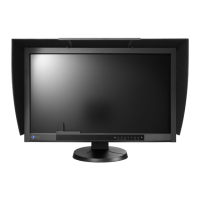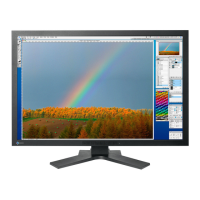37
Chapter 6 Troubleshooting
6-2. Imaging problems
Problem Possible cause and remedy
1. The screen is too bright or too dark. • Use “Brightness” in the Adjustment menu to adjust it. (The
LCD monitor backlight has a limited life span.) When the
screen becomes dark or begins to icker, contact your
local EIZO representative.)
2. Characters are blurred. • Check whether the PC is congured to meet the resolution
and vertical scan frequency requirements of the monitor
(see “2-1. Setting Resolution” (page 13)).
3. Afterimages appear. • Afterimages are particular to LCD monitors. Avoid
displaying the same image for a long time.
• Use the screen saver or power saving function to avoid
displaying the same image for extended periods of time.
4. Green/red/blue/white dots or defective
dots remain on the screen.
• This is due to LCD panel characteristics and is not a
failure.
5. Interference patterns or pressure marks
remain on the screen.
• Leave the monitor with a white or black screen. The
symptom may disappear.
6. Noise appears on the screen. • When entering the signals of HDCP, the normal images
may not be displayed immediately.
7. (DisplayPort input)
Display position of the windows changes.
• When the signal is switched, the position of the window
may be changed. In the Adjustment menu, set “DP Power
Save” to “Off” (see “5-4. Setting DisplayPort Power Save”
(page 35)).
8. (DisplayPort or HDMI input) The color
shown on the display is not correct.
• Use “Screen” - "Color Space" under the Adjustment menu
to adjust it.
• For HDMI signal input, change the “Signal Format” setting
(see “To switch signal formats” (page 14)).
9. An image does not display on the entire
screen.
• Change the “Screen Size” setting (see “To select screen
size” (page 15)).
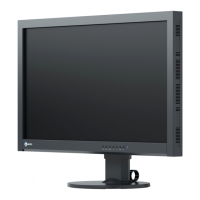
